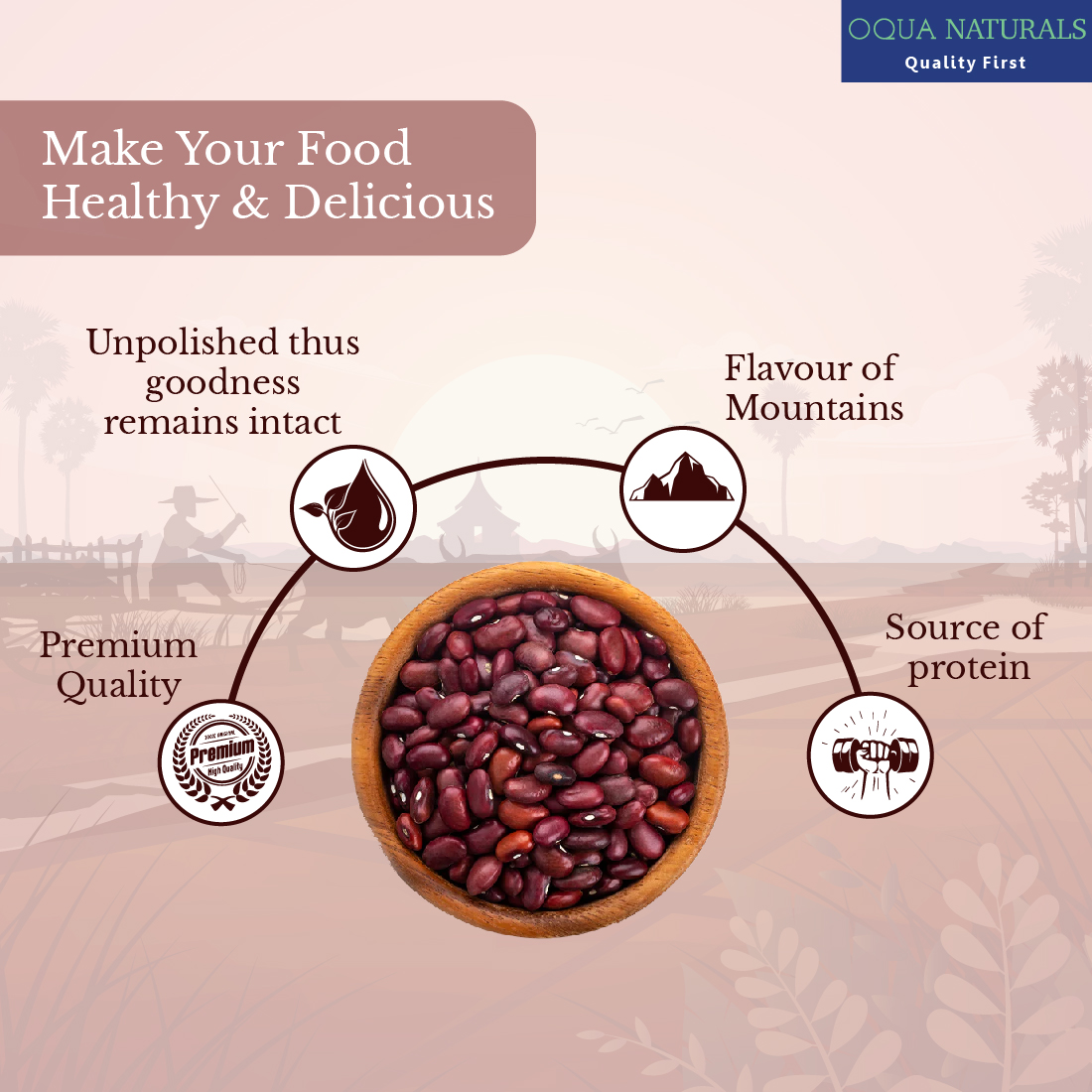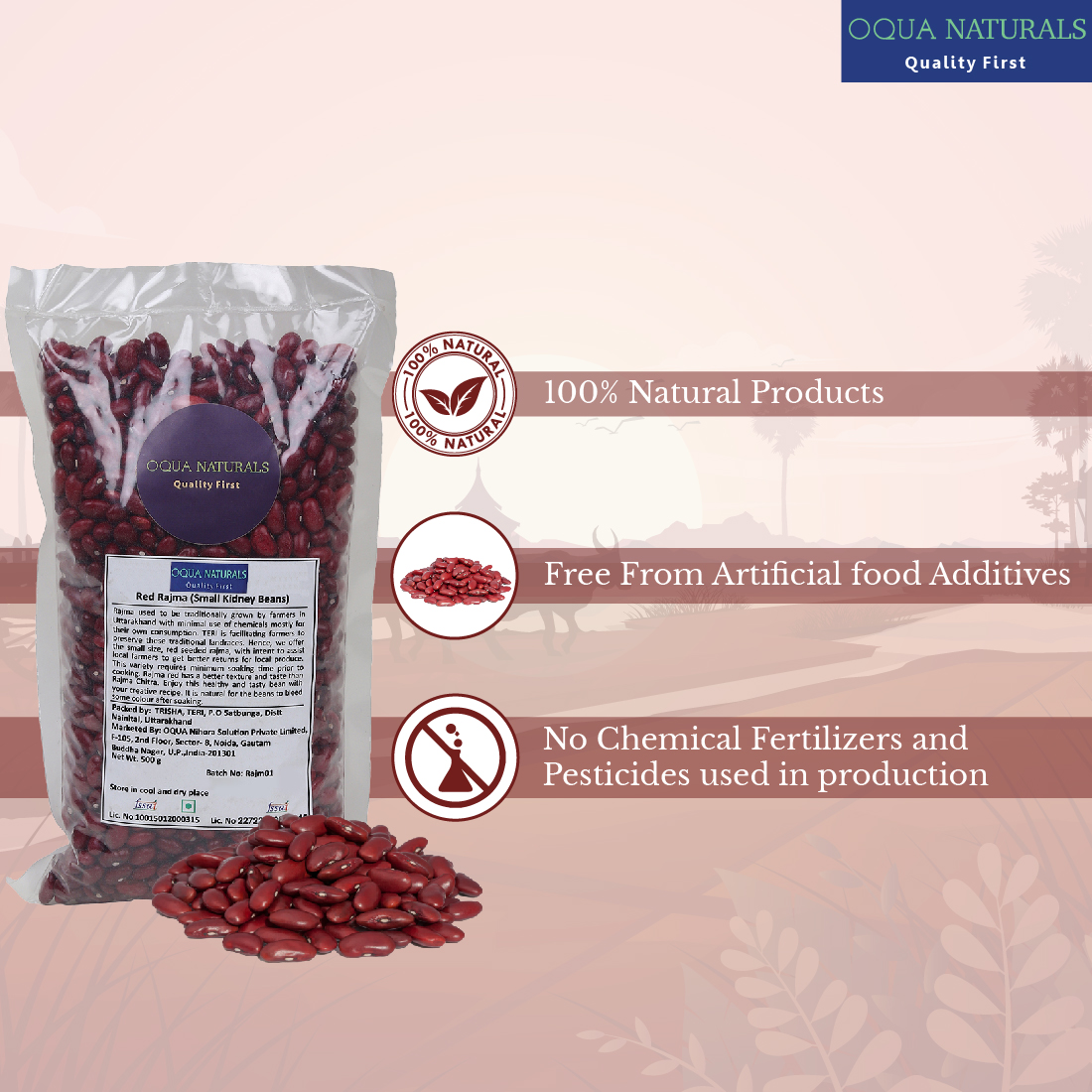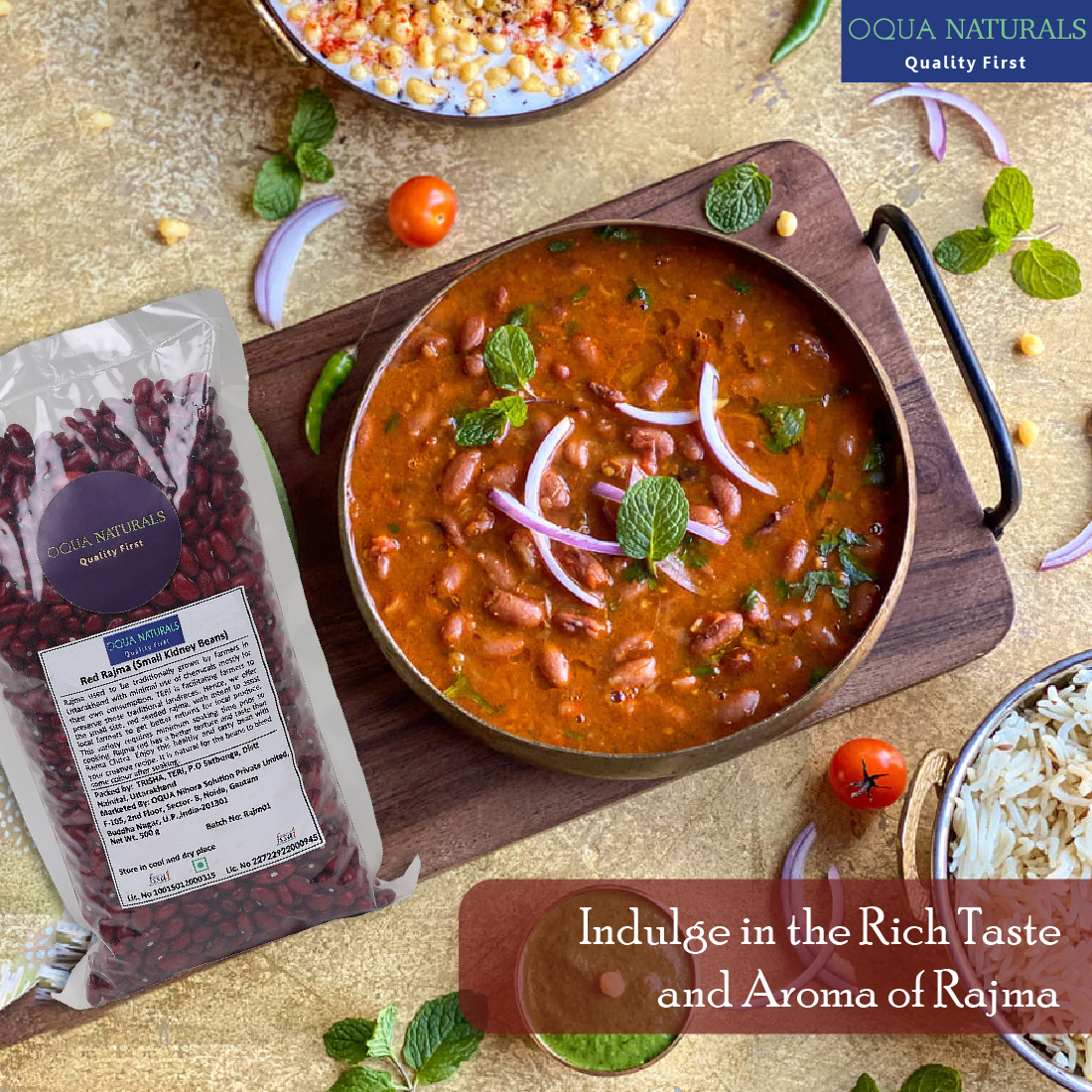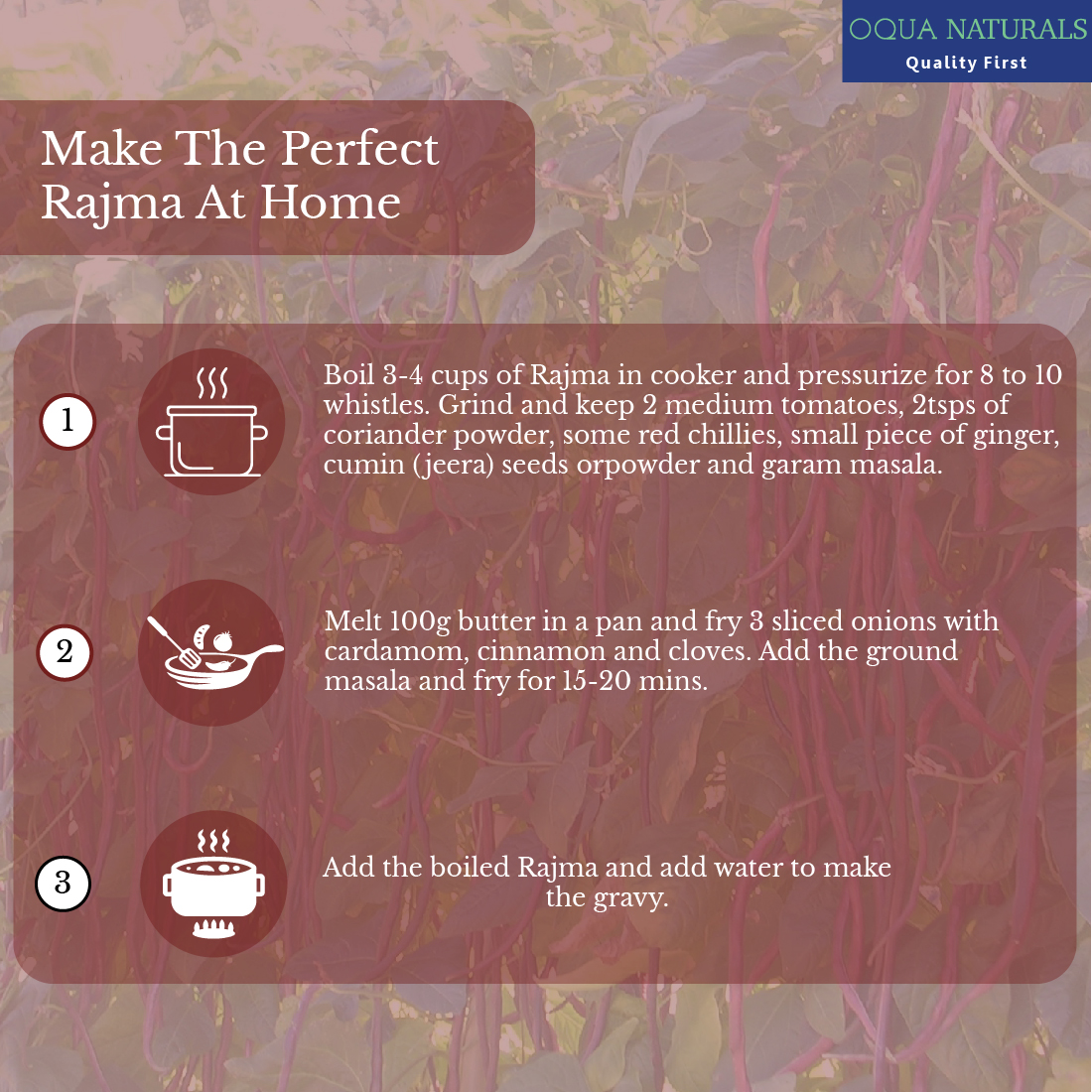Red Rajma is a popular vegetarian dish, originating from the Indian subcontinent, consisting of red kidney beans in a thick gravy with many Indian whole spices and usually served with rice. The dish developed after the red kidney bean was brought to the Indian subcontinent from Mexico. Rajma chawal, Rajma served with boiled rice, is a popular dish throughout northern India and Nepal. All natural and pure Rajma, traditionally grown by farmers in Uttarakhand. Rajma red has better taste and texture than Rajma chitra. Organically grown, Rajma is a great protein source. It is said to have cholesterol lowering properties. It goes great with steamed rice, which makes a classical dish of North India. The combination of Rajma and rice generally lists as a top favorite of North Indians and Nepalis. Rajma is prepared with onion, garlic and many spices in India, and it is one of the staple foods in Nepal.
Benefits Of Red Rajma
- Rich in vitamins and other minerals, Red Rajma is a good source of protein & carbohydrates.
- Red Rajma might help in reducing diabetes.
- It’s also help for controlling heart diseases, weight management and fighting against cancer.
- Red Rajma are a better source of vitamin K and vitamins including vitamins B-1, B-2, B-3, B-6 and B-9.
Use Of Red Rajma
- Rajma Curry: One of the most popular dishes made with Red Rajma is Rajma Curry. It is a rich and flavorful curry made with cooked kidney beans simmered in a spiced tomato-onion gravy. Rajma curry is typically enjoyed with steamed rice or Indian bread like roti or naan.
- Rajma Masala: Red Rajma can be cooked with a blend of aromatic spices, tomatoes, onions, and garlic to make a thick and spicy Rajma Masala. This dish is similar to Rajma Curry but has a drier consistency and can be enjoyed as a main course with rice or bread.
- Rajma Salad: Red Rajma can be added to salads for a protein boost. Cooked Rajma beans can be mixed with chopped vegetables like tomatoes, cucumbers, onions, and bell peppers. Toss the salad with a tangy dressing of lemon juice, olive oil, and spices for a refreshing and nutritious meal.
- Rajma Wraps/Burritos: Red Rajma can be used as a filling for wraps or burritos. Mash the cooked Rajma beans slightly and season them with spices. Spread the mixture on a tortilla or flatbread, add fresh vegetables, cheese, and sauces of your choice, and roll it up for a delicious and filling meal.
- Rajma Soup: Red Rajma can be cooked with vegetables, broth, and spices to make a hearty and nutritious soup. Simmer the Rajma beans with onions, carrots, celery, garlic, and vegetable or chicken broth until the beans are tender. Season it with herbs and spices of your choice for a comforting and satisfying soup.
Frequently Asked Questions
1. What are kidney beans rich in?
Kidney beans are rich in various nutrients like proteins, carbohydrates, and even fats. Additionally, they contain several minerals, including iron, magnesium, calcium, and bioactive compounds.
2. What are the benefits of eating kidney beans?
Consuming kidney beans has many benefits. For example, it lowers the risk of cancers, improves metabolism, regulates blood sugar, weight loss and regulates gut health.
3. Are rajma and kidney beans the same?
Kidney beans are called rajma in many parts of India. It is because they are a vibrant source of minerals like potassium and magnesium.
4. What bean has the highest protein content?
Edamame beans, or boiled soybeans, have the highest protein content of 18%, while kidney beans have a protein content of almost 8%.
5. Are cooked kidney beans safe?
Yes. fully cooked red rajma are entirely safe to eat.
6. How long do you boil kidney beans?
The best time frame for boiling kidney beans is 30 minutes at 212-degrees Fahrenheit or 100 degrees Celsius. First, you need to place them on the stovetop and bring them to a boil. Then reduce it to a simmer.








Reviews
There are no reviews yet.